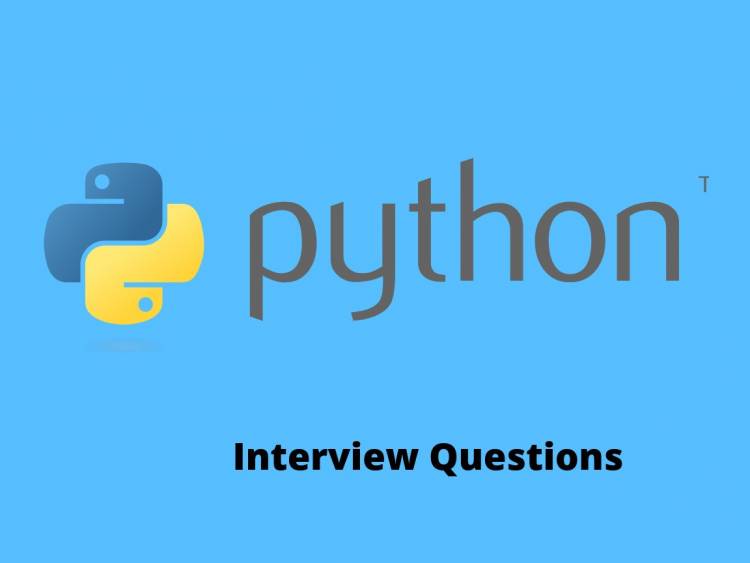
Top 10 Python Interview Questions and Answers for Job Preparation
Python is gaining popularity as the most preferred object-oriented programming language by professionals in the field of data science, data analytics, and machine learning. With the increasing popularity of Python, the number of job opportunities is also increasing for Python developers. As more and more professionals seek jobs as Python experts, organisations have also geared up with grilling interview processes to ensure that they select the best candidates.
Interviews could be hectic and intimidating especially for the freshers in the domain. Therefore, it is important to prepare for the interview beforehand. Preparing for a Python interview will involve checking out the most commonly asked interview questions and understanding what are the answers to these questions. Apart from this, understanding the role you have applied for is also important. Based on the job description, assess what skills recruiters would be seeking in an ideal candidate for that role. Develop those skills and the chances of you cracking the interview will increase multifold.
In this article, we will see what are some of the commonly asked python interview questions and their answers.
1. What are the Functions in Python?
The blocks of organized and reusable codes used to single and related events are called Functions. Functions create better modularity for the applications that reuse high degree of coding. A number of built-in functions are present in Python, e,g., print(). Python also allows the creation of user-defined functions.
2. What is Pandas?
Pandas is an open-source Python library. It includes a rich set of data structures and enables data-based operations. Pandas fits into various roles of data operation across industries and domains such as academics or solving complex business problems. It can easily deal with a large variety of files.
3. What are dataframes?
A pandas dataframe is a mutable data structure in pandas. It supports heterogeneous data that is arranged across two axes, i.e., rows and columns. Here’s the syntax to read files into Pandas:
Import pandas as pd
df=p.read_csv(“mydata.csv”)
‘df’ is the pandas dataframe in this case and read_csv() is used to read a comma-delimited file as a dataframe.
4. How would you combine dataframes in pandas?
Two dataframes can be stacked together in two ways, i.e., vertically or horizontally with the help of the following functions:
- concat()
- append()
- join()
Concat works best when the two dataframes have an equal number of columns. It is mostly used for concatenation of data that have similar fields. It is basically a vertical stacking of two dataframes into one.
Append is used to join two dataframes horizontally. It is the best concatenation function when you need to merge two tables together.
When you need to extract data from different dataframes having one or more columns, then join is the right function to use. In this case, stacking is horizontal as in the case of Concat.
5. How would you convert a string into lowercase?
string.lower() is the function that could be used to convert all uppercase alphabets to lowercase in a string. For example:
String = ‘HELLOWORLD’ print(string.lower())
Output: helloworld
6. How would you convert the first letter of a string to uppercase?
The function used to convert the first letter of the string to uppercase is capitalize(). If the first character is already in capitals, then the function will return the original string. The syntax is:
string_name.capitalize() ex: n = “helloworld” print(n.capitalize())
Output: Helloworld
7. How would you insert an element at a given index?
An inbuilt Python function called insert() can be used to insert an element at a given index. The syntax is:
list_name.insert(index, element)
Let us look at an example:
list = [ 0,1, 2, 3, 4, 5, 6, 7 ]
#insert 10 at 6th index
list.insert(6, 10)
Output: [0,1,2,3,4,5,10,6,7]
8. What is the best method to remove duplicate elements from a list?
The most common among the various methods to remove duplicate elements from a list is to convert the list into a set. The function that would be used here is set(), and list() to convert it back into a list.
Let us look at an example.
list0 = [2, 6, 4, 7, 4, 6, 7, 2]
list1 = list(set(list0)) print (“The list without duplicates : ” + str(list1))
Output: The list without duplicates : [2, 4, 6, 7]
9. What are the various operators in Python?
The operators in Python are broadly characterised into four types, i.e., Arithmetic Operators, Relational Operators, Assignment Operators, and Logical Operators. The operators under each category are:
Arithmetic: ( Addition(+), Substraction(-), Multiplication(*), Division(/), Modulus(%) ),
Relational ( <, >, <=, >=, ==, !=, ),
Assignment ( =. +=, -=, /=, *=, %= ),
Logical ( and, or not )
Other types of operators are Membership, Identity, and Bitwise Operators
10. What is the ‘with statement’ in Python?
Exception handling in Python uses the ‘with’ statement. A file containing a with statement can be opened and closed while executing a block of code without using the close() function. It makes the code easier to read.
Conclusion
These are the 10 common Python interview questions that you might face in an interview. But these are to just give you an idea of the type of questions you could come across in a technical Python interview. For an exhaustive list of more than 100 Python interview questions, you can check out this blog by Great Learning.













